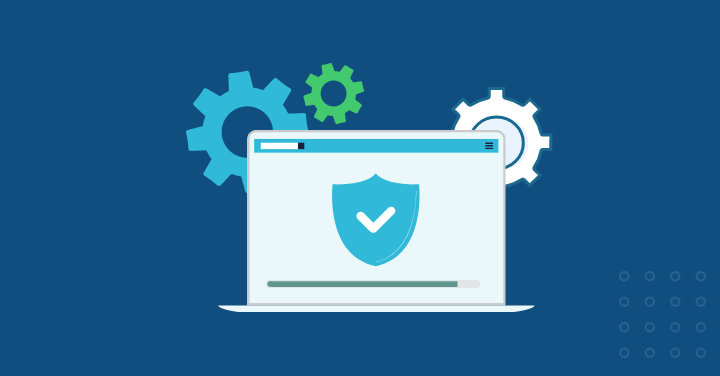Around 57% of data breaches are attributed to poor patch management. This stat clearly attributes to the need for patch management to keep the organization safe by mitigating security vulnerabilities.
Without the right patch management software, it becomes difficult for organizations to identify critical updates.
Only implementing a patch management process is not enough for any organization to win the game.
One should also define the Key Performing Indicators (KPI) and Key Risk Indicators (KRI) to track the effectiveness of patch management.
To manage a system effectively, you need to have key performance indicators (KPIs) in place to track progress and identify improvement areas.
It is a process by which system administrators apply software updates and security patches to systems.
This blog post will explore some of the most important KPIs for patch management.
By tracking these indicators, you can ensure that your software is up-to-date and secure.
From patch deployment rates to system vulnerabilities, read on to learn more about what you should monitor.
What are KPIs for Patch Management?
A key performance indicator (KPI) is a measurable value that demonstrates how effectively a company achieves key business objectives.
Companies use KPIs at multiple levels to evaluate their success in reaching targets.
At the highest level, the company may use KPIs to measure its overall performance.
Specifically for patch management, the organization can use KPIs to measure the effectiveness of the patch management process and identify areas for improvement.
There are several different KPIs that can be used for patch management, but some common ones include the following:
- Percentage of critical patches applied within the specified time frame
- Percentage of systems compliant with patch policy
- Mean time to deploy patches
- Number of unplanned outages due to missing patches
By tracking these KPIs, companies can better understand how well their patch management process is working and where they need to make changes.
Keep Your Organization Away from Vulnerabilities with Motadata’s Proficient Patch Management Solution
Seamlessly manage endpoints and increase operational efficiency by automating the entire patch management process.
- Automatically scan endpoints
- Auto-download and deploy patches based on specific criteria
- Centrally manage endpoints
Take control of your patch management process! Try Motadata ServiceOps Patch Manager free for 30 days!
Some Important KPIs You Should Measure for Patch Management
Patch management is critical for keeping your systems secure and running smoothly.
By regularly applying patches, you can close security vulnerabilities, fix bugs, and improve the performance of your systems.
There are a few key performance indicators (KPIs) that you can use to measure the effectiveness of your patch management process.
These KPIs will help you identify areas where your process needs improvement so you can make the necessary changes.
1. Number of patches applied
To witness the success of patch management, it is crucial to measure this critical metric that provides you with the number of patches applied.
By calculating the number of patches applied, you will get to know the missing patches, which might cause trouble in network security violations.
An accurate number of patches shows that patch management is working proficiently, whereas a low patch applied number increases the chances of vulnerability.
2. Security vulnerabilities closed per month
This KPI measures how many security vulnerabilities are closed each month through the application of patches.
A high number indicates that your patch management process effectively addresses known security issues.
A low number indicates that there may be gaps in your process or that new vulnerabilities are being introduced faster than they can be patched.
3. Percentage of systems patched within 30 days
This KPI measures how quickly systems are patched once a new patch is released.
A high percentage indicates that systems are being patched promptly.
A low percentage indicates delays in applying patches, which could leave systems vulnerable to attack.
4. Number of unplanned downtime events per month
This KPI measures how often system downtime occurs due to patching activities.
A low number indicates that patching is not disrupting business operations.
A high number indicates that patching is causing disruption and may need to be scheduled during less busy times or periods of maintenance windows.
5. Percentage of critical vulnerabilities patched within X days of release
This KPI measures the percentage of critical vulnerabilities patched within a specific timeframe after they were announced.
Critical vulnerabilities could lead to data breaches or other serious security incidents.
As such, it is essential to patch these vulnerabilities as quickly as possible.
By tracking these KPIs, you can clearly see how well your patch management process is working.
If you see areas that need improvement, you can make the necessary changes to ensure that your system is fully patched and up-to-date.
Decrease Vulnerabilities and Increase Productivity with Motadata’s ServiceOps Patch Manager
Manage vulnerabilities seamlessly with Motadata’s ServiceOps Patch Manager.
Whether you want to reduce the security risks or want to download the patch updates, our solution provides you with exceptional Endpoint Management and accelerates your Patching Activities.
You will also get a complete visibility of overall system health that will help in enhancing the productivity of your organization.
Mitigate Security Risks, Adhere to Compliance Standards, and Experience the Ease of Managing Updates with Motadata Patch Manager.
Conclusion
Patch management is critical to the success of any organization, yet it can take time to know where to start when it comes to KPIs.
In this article, we’ve provided a few examples of KPIs that you can use to measure the success of your patch management process.
By tracking these KPIs, you’ll identify areas where your process needs improvement and make changes accordingly.
With a robust patch management process in place, you can avoid security breaches, ensure compliance with industry regulations, and improve the overall efficiency of your organization.






